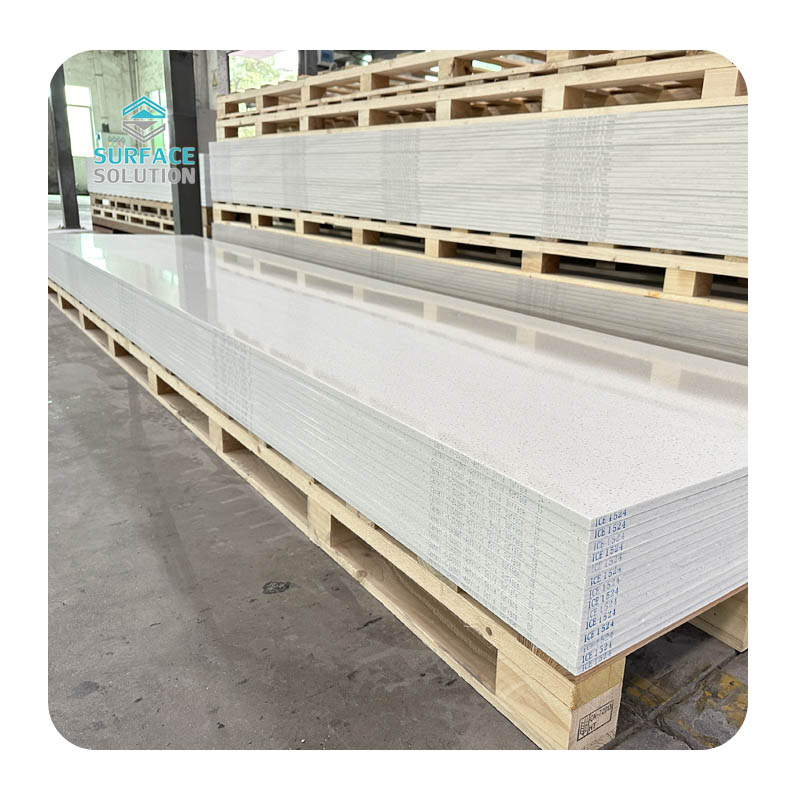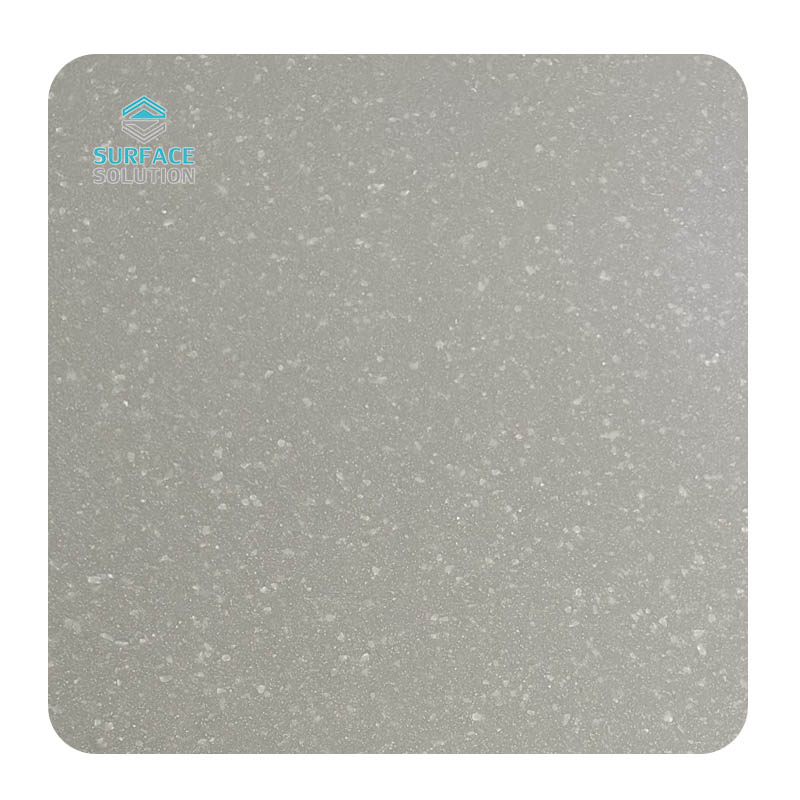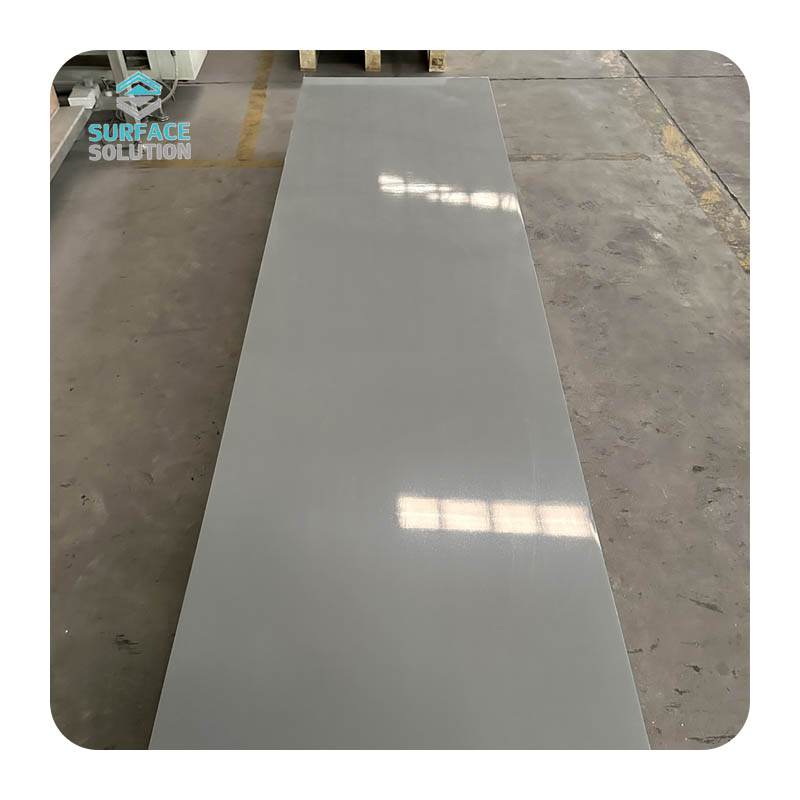

Solid surface countertops, such as Surface Solution, Staron, or Swanstone, have become a popular choice for modern kitchens and bathrooms due to their durability, seamless design, and resistance to stains. Unlike natural stone like granite or marble, these man-made surfaces require specific care to maintain their smooth finish and prevent damage over time. Whether you’re dealing with daily spills or stubborn stains, following the right cleaning techniques will keep your countertops looking brand new for years. Below is a step-by-step guide to effective solid surface countertop maintenance.


For oil-based stains (like cooking oil, butter, or lotion), start by blotting the excess oil with a paper towel—do not wipe, as this can spread the stain. Next, apply a small amount of mild dish soap directly to the stain and let it sit for 5 minutes. Use a damp cloth to gently scrub the area, then rinse with clean water and dry. If the stain remains, mix a small amount of rubbing alcohol (isopropyl alcohol) with water (1:1 ratio) and use a cloth to dab the stain. Rubbing alcohol cuts through oil without harming solid surfaces, but always test it on a hidden area first to ensure it doesn’t discolor the countertop.

Abrasive Cleaners and Tools: Never use scouring pads (like steel wool), sandpaper, or abrasive cleaners (such as Comet or Ajax). These scratch the surface, making it more prone to staining.
Hot Items: Do not place hot pots, pans, or appliances (like toasters or coffee makers) directly on the countertop. Solid surfaces can warp or discolor when exposed to high heat. Always use a heat pad or trivet.
Sharp Objects: Avoid cutting or slicing directly on the countertop. Use a cutting board to prevent scratches and nicks.
Harsh Chemicals: Bleach, ammonia, drain cleaners, and oven cleaners can eat away at the countertop’s finish. Stick to mild, non-toxic cleaners.
Ignoring Spills: Wipe up spills immediately—especially acidic substances like lemon juice, vinegar, or tomato sauce. These can etch the surface if left sitting for too long.
Seam Care: If your countertops have seams, clean them regularly with a soft brush (like a toothbrush) dipped in soapy water to remove trapped dirt.
Avoid Heavy Impact: Do not drop heavy objects (like cast-iron pans) on the countertop, as this can cause cracks or chips.
Test New Cleaners: Always test a new cleaner or polish on a hidden area (such as under the sink) before using it on the entire countertop.
Professional Repairs: For deep cracks or major damage, contact a professional solid surface repair technician. They can often fix damage without replacing the entire countertop.
Related Blogs
-
 Space-Saving Solutions with Acrylic Solid Surface DesignsIn an era of shrinking living and working spaces—from micro-apartments in urban centers to compact café kitchens—designers and homeowners are increasingly prioritizing "space efficiency" without sacrificing style or functionality. Enter acryli
Space-Saving Solutions with Acrylic Solid Surface DesignsIn an era of shrinking living and working spaces—from micro-apartments in urban centers to compact café kitchens—designers and homeowners are increasingly prioritizing "space efficiency" without sacrificing style or functionality. Enter acryli -
 How to Find the Surface Area of a Solid: A Step-by-Step GuideThe surface area (SA) of a solid is the total area of all its outer faces or surfaces. Unlike volume (which measures space inside a solid), surface area focuses on the "outside"—a key measurement for real-world tasks like wrapping a gift (
How to Find the Surface Area of a Solid: A Step-by-Step GuideThe surface area (SA) of a solid is the total area of all its outer faces or surfaces. Unlike volume (which measures space inside a solid), surface area focuses on the "outside"—a key measurement for real-world tasks like wrapping a gift ( -
 What Are Solid Surface Countertops Made Of? A Deep Dive Into Their CompositionSolid surface countertops have become a staple in modern kitchens and bathrooms, celebrated for their seamless appearance, durability, and versatility. Unlike natural stone (such as granite or marble) or laminate, they are
What Are Solid Surface Countertops Made Of? A Deep Dive Into Their CompositionSolid surface countertops have become a staple in modern kitchens and bathrooms, celebrated for their seamless appearance, durability, and versatility. Unlike natural stone (such as granite or marble) or laminate, they are -
 What Are Solid Surface Countertops? A Complete OverviewIn kitchen and bathroom design, solid surface countertops stand out as a versatile choice, balancing functionality, aesthetics, and durability. Unlike natural stone (granite, marble) or synthetic quartz, they offer unique benefits—but what exact
What Are Solid Surface Countertops? A Complete OverviewIn kitchen and bathroom design, solid surface countertops stand out as a versatile choice, balancing functionality, aesthetics, and durability. Unlike natural stone (granite, marble) or synthetic quartz, they offer unique benefits—but what exact

















